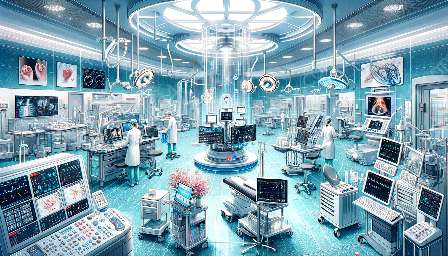Physical therapy and rehabilitation techniques rely on various biophysical mechanisms to achieve their therapeutic effects. These mechanisms encompass a wide range of biological and physical processes, including muscle and joint biomechanics, tissue healing, neuroplasticity, and the integration of medical devices. Understanding these mechanisms is crucial for optimizing the effectiveness of physical therapy and rehabilitation interventions and developing innovative biophysics-based medical devices.
Biomechanics and Tissue Response
Central to the effects of physical therapy and rehabilitation techniques is the biomechanical and tissue response that occurs within the body. Biomechanics refers to the study of the mechanical aspects of living organisms, particularly the movement and structure of muscles and joints. When a patient undergoes physical therapy, this can involve exercises, stretches, or manual techniques that target specific muscles and joints, aiming to improve their range of motion, strength, and flexibility.
At a biophysical level, these interventions trigger physiological responses in the targeted tissues, such as changes in muscle length, tension, and microstructural adaptations. Additionally, the application of medical devices, such as braces or orthoses, can modulate the biomechanical environment, providing support or altering joint alignment to promote healing and functional recovery.
Neuroplasticity and Functional Recovery
Neuroplasticity, the brain's ability to reorganize itself by forming new neural connections, plays a crucial role in the effects of physical therapy and rehabilitation on neurological conditions and injuries. Through targeted exercises and sensory-motor activities, physical therapy aims to facilitate the rewiring and reprogramming of neural circuits, promoting functional recovery and motor learning.
From a biophysical perspective, these interventions harness the principles of neuroplasticity by engaging in specific movement patterns, sensory stimuli, and motor tasks to stimulate brain plasticity. Furthermore, the integration of medical devices, such as functional electrical stimulation (FES) devices, can directly modulate neural activity, promoting the activation of targeted muscles and facilitating neuroplastic changes in the central nervous system.
Tissue Healing and Regeneration
Another critical aspect of physical therapy and rehabilitation is the promotion of tissue healing and regeneration. Biophysically, these interventions influence the cellular and molecular processes involved in tissue repair, such as inflammation, cell proliferation, and extracellular matrix remodeling. Various modalities, including therapeutic ultrasound, laser therapy, and electrical stimulation, are employed to modulate these biophysical processes and promote favorable tissue healing responses.
Moreover, the advancement of medical devices, such as regenerative medicine technologies and wearable therapeutic devices, offers new opportunities to apply biophysics principles for enhancing tissue regeneration and accelerating recovery from musculoskeletal injuries and degenerative conditions.
Integration of Medical Devices and Biophysics
The synergy between physical therapy, rehabilitation techniques, and biophysics is increasingly evident in the integration of advanced medical devices. From wearable sensors for motion analysis to robotic exoskeletons for gait rehabilitation, these devices leverage biophysical principles to complement and optimize traditional therapeutic approaches. By providing quantitative assessments, real-time feedback, and targeted interventions, medical devices driven by biophysics enhance the precision and customization of physical therapy and rehabilitation strategies.
Moreover, the development of smart assistive devices and implantable biophysical technologies holds promise for revolutionizing the delivery of rehabilitation interventions, enabling personalized and adaptive treatments tailored to each patient's biophysical profile and therapeutic needs.
Conclusion
The biophysical mechanisms underlying the effects of physical therapy and rehabilitation techniques represent a multifaceted interplay between biological processes, physical stimuli, and the integration of medical devices. Understanding and harnessing these biophysical principles are essential for advancing the efficacy and innovation of therapeutic interventions, as well as for the development of next-generation biophysics-based medical devices that can revolutionize the field of rehabilitation and enhance patient outcomes.


